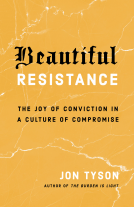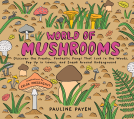
Darwin and the Art of Botany
Observations on the Curious World of Plants
by James T. Costa; Bobbi Angell
This title was previously available on NetGalley and is now archived.
Send NetGalley books directly to your Kindle or Kindle app
1
To read on a Kindle or Kindle app, please add kindle@netgalley.com as an approved email address to receive files in your Amazon account. Click here for step-by-step instructions.
2
Also find your Kindle email address within your Amazon account, and enter it here.
Pub Date Oct 17 2023 | Archive Date Oct 17 2023
Talking about this book? Use #DarwinandtheArtofBotany #NetGalley. More hashtag tips!
Description
Uncover Darwin’s most important writings about plants with this important collection featuring expert interpretations and rare illustrations.
Charles Darwin is best known for his work on the evolution of animals, but in fact a large part of his contribution to the natural sciences is focused on plants. His observations are crucial to our modern understanding of everything from the amazing pollination process of orchids to the way that vines climb. Darwin and the Art of Botany collects writings from six often overlooked texts devoted entirely to plants, and pairs each excerpt with beautiful botanical art from the library at the Oak Spring Garden Foundation, creating a gorgeously illustrated volume that never existed in Darwin's own lifetime, and hasn't since. Evolutionary botanist and science historian James Costa brings his expertise to each entry, situating Darwin's words in the context of the knowledge and research of the time. The result is a new way of visualizing Darwin's work, and a greater understanding of the ways he's shaped our world.Available Editions
| EDITION | Other Format |
| ISBN | 9781643260792 |
| PRICE | $30.00 (USD) |
| PAGES | 380 |
Available on NetGalley
Featured Reviews
I didn't spend too much time with the text in this book, and mostly admired the botanical artwork. This gorgeous coffee table style book will be a beautiful gift or addition to a collection of a botanical art enthusiast, a fan of Darwin's, or a collector of plant and flora literature. I loved the idea behind this!
"Darwin and the Art of Botany is a captivating and educational read for anyone interested in the world of plants. The authors, James T. Costa and Bobbi Angell, do an excellent job of explaining complex botanical concepts in an easy-to-understand manner, making this book accessible to both experts and laypeople alike. The combination of Darwin's observations and the illustrations by Bobbi Angell bring the world of plants to life, making it a truly immersive experience. Whether you're a botanist, a nature lover, or just looking for a good read, this book is sure to leave you with a greater appreciation for the incredible diversity and beauty of the plant kingdom."
 Barbara S, Reviewer
Barbara S, Reviewer
My son is studying Botany in college and I find the plant world beautiful and mysterious so I was eager to read this book.
The authors dedicated chapters to 45 different plants studied by Darwin.
It was mentioned that a lot of Darwin’s studies involved plant movement and other animal-like behaviors. This led to some very interesting plants being featured here.
The art work in this book is beautiful but I also found the reading to be interesting .
I’ve always found orchids fascinating and learned here that the Michigan native lady slipper is a type of orchid. I didn’t know that “The name “orchid” is derived from the Ancient Greek term for testicles.”
I also found it interesting that when triggered by an insect, the Venus flytrap snaps shut in about 100 milliseconds! Also, peas have been consumed for about 7000 years, and a population of cats in an area can save pollinators!
While I think someone schooled in Botany might get more out of this book, I definitely enjoyed both the art and the science.
 Reviewer 1026763
Reviewer 1026763
I really enjoyed this one! I've been on a Darwin kick lately and have read a mix of his books and books about him and this is one of my favourites. The drawings and art pieces were stunning and I liked the way the book was segmented. I think it's a great book to come back to often and is full of fun little details that will stick with me. One in particular was "nyctinasty" where Darwin studied how peanut leaves folded up during the night. In addition to the intriguing details about botany, the book also offers an insightful look into Darwin's interests and his lasting impact on science. The combination of art and science in this book is truly remarkable and comes together seamlessly. Overall, I highly recommend "Darwin and the Art of Botany" to anyone interested in botany, Darwin's work, or the intersection of art and science.
 Peter A, Reviewer
Peter A, Reviewer
Darwin and the Art of Botany,
Observations on the Curious World of Plants
by James T. Costa and Bobbi Angell
A summary of Charles Darwin's writings about 45 species of plants, with skillfully-detailed sketches, this professionally-presented text is part history, part reference, part detailed study of Darwin's botany research, and part artwork.
The subject plant species are such as might be encountered in an English country garden and hothouse, and include peas, beans, grapes, clover, primrose and orchid. Each species is described in a half-dozen pages, with an introduction followed by Darwin's writings about that particular plant, together with Darwin quotes and personal trivia. The illustrations deserve special mention: features of the highlighted plants are sketched with botanical detail, coloured and presented with artistry.
This book will appeal to gardeners and historians, and of course to botanists. The style initially resembles a history and botany text, but the main impression upon me is an introduction to the personality of Charles Darwin, dedicated researcher of biology.
This book was a remarkable combination of fine art and scientific knowledge. "Darwin and the Art of Botany: Observations on the Curious World of Plants" shines a light on the diligent scientific research Darwin did in the field of botany. Each plant highlighted in this book is showcased by beautiful illustrations, as well as detailed excerpts from Darwin's research on the history and science behind each unique species. This work is more academic but not beyond the understanding of someone with a basic knowledge of plants. The book will appeal to scientists, gardeners, and those with a passion for fine art.
 Sarah U, Reviewer
Sarah U, Reviewer
What a beautifully constructed book. This noteworthy piece of literature blends together the realms of artistic excellence and scientific expertise. "Observations on the Curious World of Plants: Darwin and the Art of Botany" illuminates the painstaking scientific inquiry undertaken by Darwin in the field of botany. Every plant featured in this book is presented with stunning artwork and accompanied by comprehensive extracts from Darwin's research on the origins and science of each distinct species.
Reviewed from a copy made available by the publisher via NetGalley.
 Andrea K, Librarian
Andrea K, Librarian
Darwin and his statements about evolution are as controversial among the general public as ever. Most people have a general knowledge that Darwin was greatly influenced by his observations in the Galápagos Islands. In this beautifully illustrated book, the authors set out give us a glimpse of Darwin’s work at home among his beloved plants. Using specimens sent to him from around the world, Darwin engaged in careful observations to find further evidence for his theories. I really enjoyed learning about Darwin’s evidence and the book is an engaging window into the scientific process. Plus, it is visually stunning, filled with beautiful botanical drawings.
 Angela G, Educator
Angela G, Educator
In addition to the depth of coverage of Darwin's life and his science, the book provides stunning illustrations that contribute to the "art of botany" elements of the book. The excerpts from Darwin that accompany each species really bring the reader closer to Darwin. I left the book with a new appreciation for the detailed and painstaking work that goes into the study of botany.
Synopsis: Charles Darwin is best known for his work on the evolution of animals, but what people don't really know is that, in fact, a large part of his contribution to the natural sciences is focused on plants. His observations are crucial to our modern understanding of everything from the amazing pollination process of orchids to the way that vines climb. This book collects writings from six often overlooked texts devoted entirely to plants, and pairs each excerpt with beautiful botanical art from the library at the Oak Spring Garden Foundation, creating a gorgeously illustrated volume that never existed in Darwin's own lifetime, and hasn't since. Evolutionary botanist and science historian James Costa brings his expertise to each entry, situating Darwin's words in the context of the knowledge and research of the time. The result is a new way of visualizing Darwin's work, and a greater understanding of the ways he's shaped our world.
Opinion: As biologist I adore to learn more topics and although plants were not my thing, this book is amazing from the writing to the drawings and pictures inside. Just to see the details in the images is worth the reading and more so with such wonderful compilation of botanical information.
If you are a “plant-nerd" with an interest in Charles Darwin’s experimental work on plants (beautifully illustrated with many “historically significant botanical artwork"), you will enjoy this book. It includes generous quotes from Darwin’s works, including “The Various Contrivances by Which Orchids are Fertilized by Insects” (Darwin was a dedicated observer of Nature who wrote well, but he didn’t like paragraph breaks much, so be prepared to wade through long passages without rest) as well as charming tidbits about the man himself (he once lost a bet in college about the height of a ceiling, surrendering a bottle of port to the winner).
The book’s illustrations, which were provided by the Oak Spring Garden Foundation, are gorgeous and fascinating in their detail.
What I didn’t like about the book was the authors’ unusual use of idiomatic expressions that seemed to come out of nowhere and land with a thud. It’s a book about science, so going into it you expect to run into terms like “consilient resonance” and to then break open a dictionary, but what you don’t see coming are oddities like “The only fly in the ointment was his father.” or Darwin writing “How I wish I was a Botanist.” To which the authors added "(As if!)”. It’s like they were trying to make the prose approachable, but instead built speed bumps that jarred me out of reading repeatedly. Eventually they stopped with the idioms at which point the writing was fluid and interesting.
I have to mention the book's design, Sowins Design used fonts, color choices, and a layout that enhanced the content beautifully, making it a joy just to flip through. It’s the perfect coffee table book!
Disclosure: I received a free copy of this book in return for an honest review.
 Weez P, Reviewer
Weez P, Reviewer
The premise of this book and the aesthetics of it are both lovely. It was obviously created by people who care about both history and science. The illustrations are paired with the excerpts extremely well. The formatting is lovely as well.
As a side note, wow, Darwin was coming up with the right questions and wrong answers sometimes, and vice versa as well! Ha!
 Reviewer 1039834
Reviewer 1039834
I truly didn't know what to expect with this book and I was absolutely blown away. It is the most beautiful amalgamation of science and art. While it could be read straight through, which I started to do, initially, I found that not committing to a structure maximized my experience of the text. Browsing illustrations, and then reading further about each unique species in the included excerpts of Darwin's research was such an enjoyable way to move through the book. This is, as a whole, a work of art to return to over and over again. I have never understood the concept of coffee table books, to be honest -- but would want a hard copy of this to have out in my home at all times to be able to pick up and refer to, learn from, and enjoy any time. So grateful to have received the digital ARC!
 Reviewer 1098908
Reviewer 1098908
- Summary -
Although Charles Darwin is best known for his work on the evolution of animals, he also made large contributions to the natural sciences with his extensive work on plants. He made many detailed and thorough studies on various plants at his home.
Darwin and the Art of Botany is a wonderful read which includes beautiful illustrations and exerts from some of Darwin's lesser known works.
- Review -
The illustrations are beautiful and add such a nice accent to each of the dedicated chapters. The authors did a wonderful job trying to convey the type of person Darwin was, he was very inquisitive and constantly trying to understand how and why plants grew in a certain way. In addition the exerts from some of Darwin's lesser known works was very informative and it was very cool to read some of his findings.
It's a wonderful book for anyone who enjoys learning about plants, or want to know more about Darwin's research. It would be great to read over the course of a couple of rainy days; each of the sections are fairly short so you feel like you can pick it up again without feeling lost.
Thank you to NetGalley and Timber Press for this ARC.
 James L, Media/Journalist
James L, Media/Journalist
This is a "must have" for gardeners, foragers, and general nature lovers.
The book's Preface and Introduction give insightful historic details. Don't skip them!
The plants covered are listed alphabetically by botanic name from Angraecum Comet Orchid to Vitis Grape vine. Each of the forty-five entries is treated with description from six to ten pages including an illustration from a famous botanical artist.
Bobbi Angell is a scientific illustrator, printmaker, instructor, and gardener. Drawing neotropical plants for botanists at New York Botanical Garden and other institutions led to her interest in Charles Darwin, recognizing species he might have seen in Brazil and elsewhere. Bobbi is coauthor of A Botanist’s Vocabulary and her pen-and-ink illustrations have been published in floras including Vascular Plants of Central French Guiana, Vines and Climbing Plants of Puerto Rico, and Intermountain Flora. Bobbi lives in southern Vermont where she searches for, draws, and grows native and unusual plants. Visit her website at bobbiangell.com.
Jim Costa is an evolutionary biologist, entomologist, and historian of science. He is executive director of the Highlands Biological Station in Highlands, North Carolina, and Professor of Evolutionary Biology at Western Carolina University in Cullowhee, North Carolina. A long-time Research Associate in entomology at Harvard’s Museum of Comparative Zoology, he’s the author of numerous scientific research papers and several books about Darwin and Alfred Wallace Russel. He teaches biogeography and the history of evolutionary biology and lectures widely in the United States and Europe. Visit his website at jamestcosta.com.
This beautiful book is an ode to botany and the art of plants in all their glory. I've always enjoyed the style of drawing plants that is lovingly put to use alongside Darwin's detailed descriptions of his plant studies. I learned so much detail that makes me appreciate what nature has to offer even more.
 Kaye T, Reviewer
Kaye T, Reviewer
Interesting, if not a bit didactic, but did enjoy skimming the images and briefly reading about the early backgrounds of their findings. So much is known now, it is easy to forget how many of these plants, including peanuts, used to be unknown to many. If nothing else, would recommend this book for the beautiful images. Nice book.
This is a beautiful book. If you love botany then this is for you. I gleaned some wonderful information, the section on the Venus fly trap was excellent as a native of North Carolina. This is one I’ll be turning to over and over for our homeschool nature studies.
 Librarian 1164672
Librarian 1164672
This was a beautiful book with gorgeous botanical illustrations. The book gives great insight to Darwin, his research, and botany.
This book can appeal to a wide range of people, from history or botany enthusiasts, Darwin-fans, artists, nature lovers or just about anyone. The book can be a great educational tool but also a pretty coffee table book. This is one of those books that you can just flip open to any page and either marvel at the beautiful illustrations or deepen your knowledge of an interesting subject.
I am definitely recommending this book for my library!
Lovely illustrations sourced from various artists and publications. Both color and ink drawings bring life to the flora. that Darwin studied. The text is accessible, and well formatted. For any age of learner who is interested in history, botany and art.
This book is an ode to both Darwin and the natural world of today, It's very informative on the plants themselves as well as Darwin's scientific method.
"-he simulated the windy seaside conditions by violently shaking the plants, surely a curious spectacle to any passerby"
I definitely learned a lot, and for me this is a book to be perused in pieces, perhaps once printed, as a coffee table book.
 Lesley B, Reviewer
Lesley B, Reviewer
It is not always appreciated that, in addition to his revolutionary 'On the Origin of Species', Charles Darwin produced seventeen other books, including on plants. He also wrote articles on botany, and plants are increasingly prominent examples in later editions of 'Origin'. In 'Darwin and the art of Botany — observations on the curious world of plants' forty-five extracts from his works are presented alongside beautiful illustrations of the species concerned.
The botanical illustrations come from a collection at the Oak Spring Garden Foundation, in the United States. They are grouped, as in Darwin's studies, into climbing plants, modes of fertilisation, insectivorous plants, orchids, flower forms, and power of movement in plants. The accompanying texts show Darwin's experimental method and precise focus. However, they are quite technical and might best be appreciated by someone with botanical knowledge. For other readers, an introductory diagram labelling the parts of plants would have been helpful.
Nevertheless, this is a beautiful and interesting book. As the authors say, it illustrates “a corpus of work that was 'Origin' writ large; myriad subjects with an eye to extending and reinforcing the explanatory power of his theory of evolution by natural selection.”
 Willy M, Reviewer
Willy M, Reviewer
A delightful book that covers the botanical investigations of Darwin. Excellent illustrations and perfect selections from Darwin and others in the field at the time. The book clearly shows Darwin close to the concepts of the theory of genetics which were to become an integral element to understanding the idea of natural selection. Those concepts were to be explained by Mendel a generation later. One does not get a sense of Darwin missing anything though. We marvel at his speculations and his meticulous work and see the proper context of him and the state of science at the time. The answers were being formulated to the questions, but no one was there just yet.
This book is a pleasant enjoyable read and a perfect way to enhance your knowledge of Darwin. Well done Costa and Angell.
This beautiful book combines science and art to provide a delightful book for botanists, scholars, gardeners, scientists, and others who enjoy learning about plants. The book begins with a foreword, preface, and intro that describe the process of deciding what would go into the book, as well as background on the author and sources. A thoughtfully detailed biography of Darwin is found at the beginning of the book, accompanied by black and white illustrations and details about his botanical writings.
Each type of plant is described through author comments and excerpts from Darwin's writings. The plants are illustrated with color plates taken from authoritative artistic sources. The book is well-researched and includes an index, botanical art credits, end notes, a list of digital resources, and a bibliography.
This book is by far a book to be read slowly and savored, rather than to be rushed through. It is a credible scholarly source of information and scientific art. While this book may appeal to a limited niche group of readers, it is certainly a fine addition to the body of knowledge about botany, and provides a bridge between science and art.
I received this book from the publisher and from NetGalley, in exchange for an honest review. The opinions expressed here are entirely my own.
 Reviewer 725763
Reviewer 725763
This unique volume unearths six rarely seen, plant-centered texts by Charles Darwin, and presents them with breathtaking 19th-century botanical illustrations. Framing Darwin's own words within the lens of the science of his time, this curated collection provides insight into a pioneering mind that forever changed our relationship with the natural world.
This visually beautiful book contains fascinating excerpts from Darwin's work, which illuminate the wonders of the natural world.
Thanks, NetGalley, for the ARC I received. This is my honest and voluntary review.
 Ama A, Reviewer
Ama A, Reviewer
Darwin and the Art of Botany is a stunning novel that incorporates Darwin's own writings, collections of plants and the unconventional path Darwin took as one of most influential scientists. I greatly enjoyed the detailed illustrations, descriptions, and applications of plants. This book would be a botanist's or environmentalist's dream to have.


















